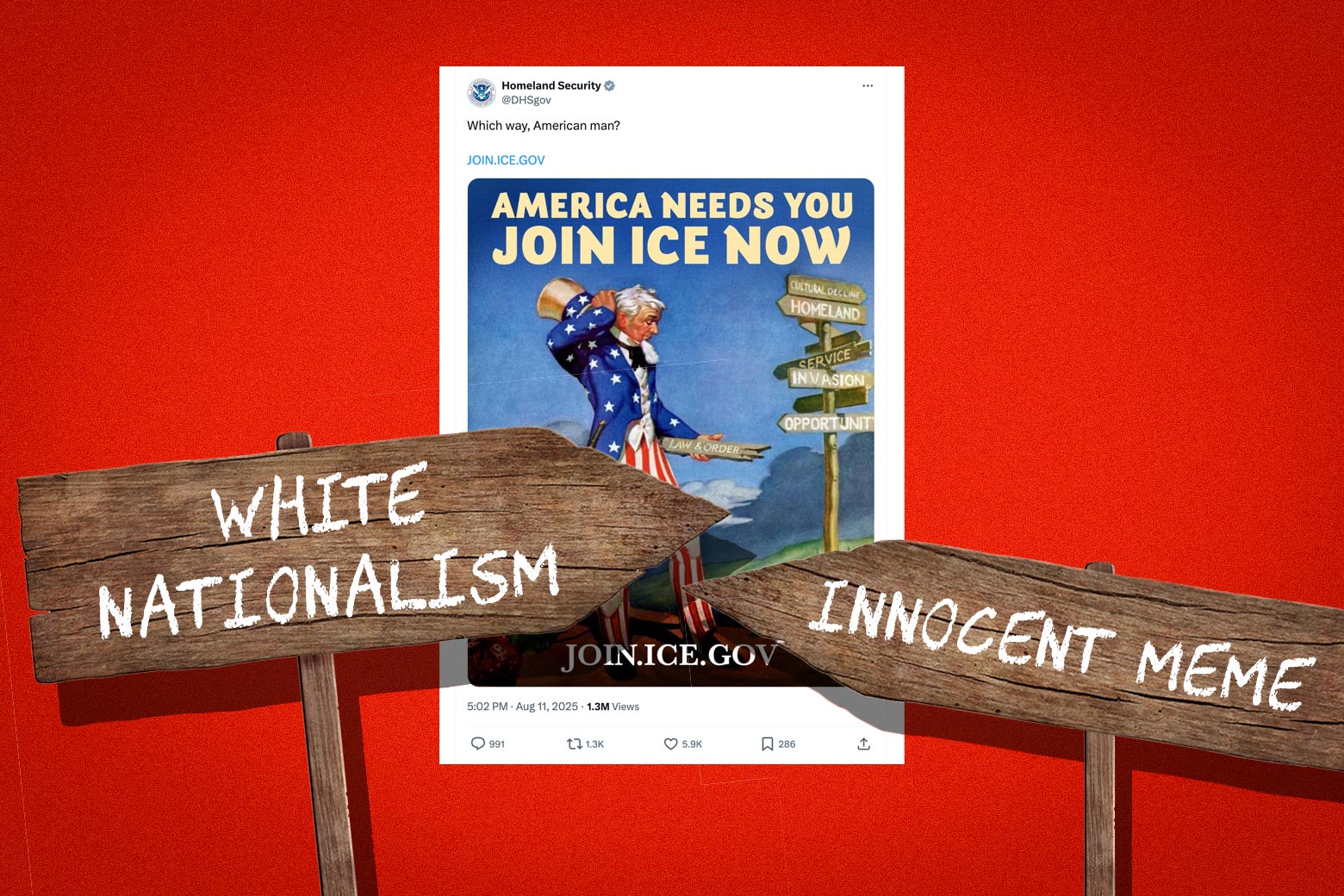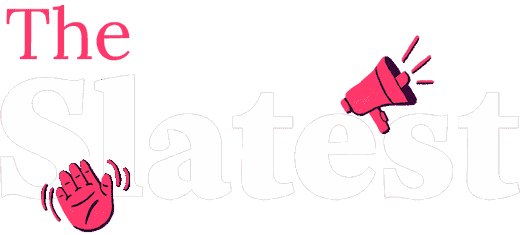The Ugly Truth Behind the Homeland Security Department's Constant Posting

 (min-width: 1024px)709px,
(min-width: 768px)620px,
calc(100vw - 30px)" width="1560">
(min-width: 1024px)709px,
(min-width: 768px)620px,
calc(100vw - 30px)" width="1560">Sign up for the Slatest to get the most insightful analysis, criticism, and advice out there, delivered to your inbox daily.
On Monday, the X account for the Department of Homeland Security published one of its many recruitment posts for US Immigration and Customs Enforcement. It features an image , in the style of mid- 20th-century propaganda posters, of Uncle Sam standing before a signpost with the words Opportunity , Homeland , and Service pointing in one direction, and Invasion and Cultural Decline pointing in the other. He ponders, in his hand, a broken-off sign labeled Law & Order .
The truly notable part of this post, however, is in its caption: “Which way, American man?”
Which Way Western Man? is the title of a 1978 book by the white nationalist William Gayley Simpson. The book promoted the classic conspiracy theory about Jewish cabals in control of global institutions, and it supported eugenics, segregation, and the deportation of Jews. It seems hard to ignore the direct connection to white nationalism in the DHS post, given its mention of “cultural decline”—a term often used by white nationalists to lament nonwhite and non-European influences on American society—and given that the subject is, ultimately, recruitment for an anti-immigrant project.
And yet, there's space for the DHS account to proclaim ignorance. “Which Way Western Man” has also been a meme used by, presumably, people both aware and unaware of its origins . The earlier versions of the meme retained the right-wing fixation on traditionalism and classical European aesthetics, but the meme spun out from there to absurdist places, to the point that the only hint of its provenance appears in the use of the term “Western man.” The DHS, and any defenders, could make the argument that it was simply having some fun with internet jokes.
So is the post the result of an overly online social media manager trying to play off dumb memes? Or is the fact that it is captioned exactly one word away from a famous work of white nationalism a smoking gun?
The question is the answer: The ambiguity is the point. DHS is inviting the public to read the post as they want.
Members of the far right can see an embrace of white nationalism and feel excited and politically emboldened. Any self-styled “reasonable Republicans” can reassure themselves that they're just looking at a silly meme from an agency concerned with border security. And the administration itself can scold anyone who expresses alarm for being hysterical.
“Calling everything you dislike 'Nazi propaganda' is tiresome,” DHS Assistant Secretary Tricia McLaughlin wrote in a statement to Slate. “Uncle Sam, who represents America, is at a crossroads, pondering which way America should go.”
This isn't the first time the DHS account has appeared to engage with white nationalist imagery. The account largely trumpets arrests made by its personnel, sharing photos of captured immigrants posed alongside federal agents—or amplifies specific crimes from immigrants. (“Alien gang bangers and jihadists want to turn our nation into a public toilet,” said one right-wing content creator in a video reposted by the department.) But interspersed on its timeline are similar retro-patriotic recruitment posters and paintings meant to evoke certain elements of US history.
On July 1, the account shared a Thomas Kinkade painting of a small, tidy 1950s-era town with the caption “Protect the Homeland.” This is the kind of nostalgic image often evoked in white nationalist fantasies of a society untouched by modern feminism or any kind of religious or cultural diversity; the commentary implies that this version of America is under threat from immigrants and requires some kind of force to preserve. (Kinkade's estate put out a statement condemning the use of his art “to promote division and xenophobia associated with the ideals of DHS.”)
The next such post from the account seemed to flirt even more closely with white nationalist language. On July 14, he shared a painting depicting a young 19 th -century couple in a covered wagon, craning over an infant, the plains and mountains extending into the distance behind them. “Remember your Homeland’s Heritage,” the caption read. The implication that American “heritage” is one of white pioneers striking out across the West, and not of any Indigenous populations already there or of the other immigrant groups settling in the US at the time, sends a loaded message.
But the most overtly white nationalist post came on July 23, when the DHS shared a painting from 19 th -century artist John Gast featuring a white-robed woman floating over a US landscape, an embodiment of the concept of manifest destiny, a policy used to justify the genocide of Native Americans. The painting, American Progress , shows white Americans literally bringing light to the West—Native Americans huddle in the dark on the left side of the painting—as civilization spreads via stagecoaches and wagons. “A Heritage to be proud of, a Homeland worth Defending,” the DHS account wrote.
We don't know the true intentions behind these posts, but here's what we do know: The account doesn't need to borrow aesthetics from white nationalist internet subcultures to send an extreme message about American identity. Virtually every post the department makes serves to justify and celebrate the large-scale deportation of a largely nonwhite immigrant population—with language that portrays these immigrants as dangerous invaders and as corruptors of American culture and society. The entire messaging arm of DHS is steeped in white nationalist population-level ideas. Sometimes, if you're listening, they just say it out loud.
 Sign up for Slate's evening newsletter.
Sign up for Slate's evening newsletter.



